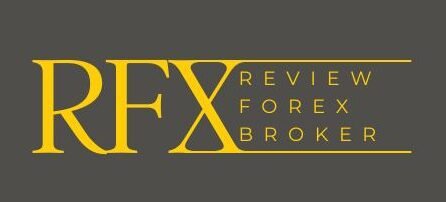When it comes to choosing a forex broker, many traders focus primarily on factors like leverage, spreads, and trading tools. However, one crucial aspect often gets overlooked: hidden fees. These can significantly impact your profitability and, in some cases, may even make a seemingly great broker quite costly. Understanding and recognizing these hidden fees is essential to making an informed decision.
In this blog, we’ll break down the most common hidden fees you should watch out for when selecting a forex broker.
What Are Hidden Fees?
Hidden fees are costs that are not immediately apparent when you open an account with a forex broker. These charges may be disguised in the form of high spreads, withdrawal fees, inactivity fees, or other charges that aren’t clearly disclosed upfront. They can eat into your trading profits, so it’s crucial to understand the full fee structure before committing to a broker.
Common Hidden Fees in Forex Trading
1. Wide Spreads and Markups
Spreads are the difference between the bid and ask prices of a currency pair, and they’re often the most visible cost of trading forex. While some brokers advertise tight spreads, others may charge wider spreads, which can increase your trading costs.
- Markups: Some brokers offer “zero commission” accounts but make up for it with wider spreads. In such cases, you may pay more than expected because of the inflated spread.
- Variable vs. Fixed Spreads: Fixed spreads remain the same regardless of market conditions, while variable spreads can widen during times of volatility (e.g., during major news events).
Checklist Action: Compare the broker’s spread across several currency pairs to ensure they are competitive and transparent. Be wary of brokers with “zero commission” accounts that rely on inflated spreads.
2. Withdrawal Fees
Many brokers charge a withdrawal fee when you transfer funds from your trading account to your bank or e-wallet. These fees can vary greatly, from a flat fee per withdrawal to a percentage of the total amount being withdrawn.
- Hidden Costs: Some brokers advertise no withdrawal fees, but these can sometimes be buried in the fine print. In some cases, withdrawal fees may increase as your withdrawal amount grows, or they might apply to certain payment methods only.
Checklist Action: Review the broker’s withdrawal policy before opening an account. Always check the fees associated with different withdrawal methods, such as bank transfers, credit cards, or e-wallets.
3. Inactivity Fees
Many brokers charge an inactivity fee if you do not trade for a certain period, typically ranging from one to twelve months. These fees are usually charged monthly and can significantly eat into your account balance if you’re not an active trader.
- Fee Structures: The inactivity fee may vary depending on the broker, and in some cases, it may be applied if you have a certain balance or fail to meet a minimum trading volume.
Checklist Action: Always check the inactivity policy before signing up. If you plan on holding long-term positions or trading sporadically, ensure that the broker does not impose excessive inactivity fees.
4. Swap and Rollover Fees
Swap fees, or rollover fees, are charged when you hold a position overnight. These fees result from the difference in interest rates between the two currencies involved in the trade. While swap rates can be negative or positive, they are often not clearly stated, and traders may not realize their impact on long-term positions.
- Negative Swaps: If the broker’s swap rate is negative, you will have to pay to keep your position open overnight.
- Swap-Free Accounts: Some brokers offer swap-free accounts for traders who cannot engage in interest-based transactions due to religious reasons, but these accounts may come with other hidden fees to compensate.
Checklist Action: Be sure to inquire about swap fees and check how they will affect your trades, especially if you’re holding positions for longer periods. Some brokers may offer lower swap rates during specific times or for certain currency pairs.
5. Deposit Fees
Some brokers impose deposit fees when you fund your account. These fees are generally more common with certain payment methods, such as credit cards or bank transfers. In some cases, these fees can be a fixed amount or a percentage of the deposit.
- Payment Method Fees: Fees can vary depending on the deposit method you choose. For example, using a credit card might incur fees, while e-wallet deposits may be free.
- Currency Conversion Fees: If you deposit funds in a currency different from your account’s base currency, the broker might charge a currency conversion fee.
Checklist Action: Review the deposit policy thoroughly before funding your account. Ensure you understand any fees associated with different payment methods.
6. Account Maintenance Fees
Some brokers charge account maintenance fees for services like keeping your account open or for using certain features. These fees are not always disclosed upfront, and they can be charged monthly, quarterly, or annually.
- Service Fees: Some brokers charge maintenance fees for accounts that don’t meet a certain minimum balance or trading volume.
- Additional Features: Brokers may also charge for extra services such as access to premium research, advanced tools, or educational resources.
Checklist Action: Understand the broker’s account maintenance policies. Ensure that the broker’s fees are aligned with the services provided and that they do not outweigh the value.
7. Fees for Advanced Trading Tools
Some brokers offer advanced trading tools like custom indicators, charting packages, or automated trading systems. While these tools can be useful for experienced traders, many brokers charge additional fees for access to these tools, which are not always disclosed.
- Third-Party Tools: If a broker uses third-party platforms or services for advanced features, these may come with extra costs, like platform usage fees or subscription charges.
Checklist Action: Clarify whether the broker charges for premium tools and assess whether they are necessary for your trading strategy. Ensure these fees are reasonable and not inflated.
How to Avoid Hidden Fees
- Read the Fine Print
Always thoroughly read the broker’s terms and conditions, particularly the fee structure. Look for any hidden charges that are mentioned in small print or as “additional fees.” - Use a Fee Calculator
Some brokers provide a fee calculator on their websites, allowing you to calculate potential charges based on your trading volume, withdrawal frequency, and other factors. - Ask Directly
If any fees are unclear or seem to be missing, don’t hesitate to ask the broker’s customer support team for clarification. - Compare Brokers
Shop around and compare the fees of several brokers. Use comparison sites or forums to gather information on brokers’ hidden fees.
Conclusion
Hidden fees are one of the most overlooked aspects when choosing a forex broker, but they can have a significant impact on your overall trading profitability. By being diligent and reviewing all fees upfront, including spreads, withdrawal fees, inactivity charges, and other hidden costs, you can avoid unpleasant surprises and ensure that your broker is truly cost-effective.
Understanding the true cost of trading will help you make an informed decision and choose a forex broker that aligns with your trading goals and budget. Always factor in the complete fee structure and be proactive in asking questions before committing to a broker.

